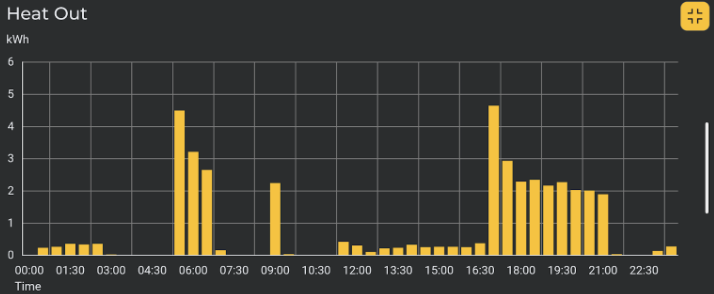Unlocking the Mystery of Energy and Power in Heating Systems
As the world makes strides towards cleaner energy sources, homeowners are increasingly curious about not only the fuel for their heating systems but also the factors influencing their system’s performance, such as insulation and heat loss. However, navigating the terminology associated with renewable energy can be a daunting task for both homeowners and self-proclaimed experts.
At the core of understanding heating systems are two fundamental concepts: energy and power. Energy, as defined in textbooks, is “the capacity to do work or cause change”. It exists in various forms, including heat, light, and motion, and cannot be created or destroyed, only transferred or transformed. On the other hand, power is the rate at which energy is transferred or transformed.
To grasp these abstract concepts better, let’s turn to an analogy involving a bathtub filled with water. Here the water represents a quantity of energy, and adding or removing water mirrors the transfer or transformation of energy. Power can then be likened to the speed of flowing water, whether it’s flowing into the bathtub or simply draining out.
Power is measured in kilowatts (kW), and energy is calculated by multiplying power by time, resulting in kilowatt-hours (kWh). For instance, running the taps at a power of 10kW for 2 hours will add 20kWh of energy, while draining the bathtub at a power of 5kW for 30 minutes would remove 2.5kWh of energy.
The Zero Emission Boiler (ZEB®) can store up to 40kWh of energy, and can be charged from the electricity grid at a power of 9kW, and provide heat to the heating system at a power of up to 15kW.
Now how does this all relate to heating systems? Consider the temperature in your home as directly proportional to the amount of heat energy it contains - the fuller the “energy bathtub”, the warmer your home will be. However, heat energy inevitably leaks out through the walls, windows, doors and the roof… just like the bathtub water flowing through the drain. This loss is a form of power, and even with optimal insulation, it’s an inevitable aspect of heating your home.
In cold weather, heat loss can typically be between 6 to 8kW resulting in a significant loss of heat energy over the course of a day. To maintain a comfortable temperature indoors, heat energy from sources like the ZEB or a heat pump must counterbalance this loss. Similar to adjusting the taps to maintain the water level in your bathtub, your thermostat regulates the heat input to match the heat loss - ensuring a consistent temperature indoors your home.
To keep the temperature in your home from being too hot or too cold, heat energy from sources such as the ZEB or a heat pump must be added to balance that being lost. The role of your thermostat is to open the taps to the bathtub just the right amount, so that the power of the heat being added matches the power of the heat loss, and the energy and temperature in your home stays at a comfortable level.
In regions like the UK, energy companies charge based on the quantity of energy consumed, not the speed or power that we use it at. Some energy companies adjust prices of energy dependent on the time of day, charging less for energy used at night and more during the daytime. Therefore, understanding energy usage patterns, rather than just power consumption, is critical in assessing heating system costs.
To aid homeowners in understanding their energy usage, the ZEB’s mobile app provides detailed charts which show the quantity of energy being added to the ZEB, and the quantity of heat energy being called for by the thermostat. These charts divide the day up into 48 periods of half an hour and show the energy in kWh that flowed in and out of the ZEB, rather than the power in kW. While the ZEB is charging at a power of 9kW you’ll see 4.5kWh of energy in each half-hour of the chart.
In conclusion, grasping the concepts of energy and power is essential for optimising heating systems and managing energy costs effectively. With a better understanding of these key principles, homeowners can make informed decisions to create efficient and sustainable living spaces.
Author: Iain Woolley|Chief Technical Officer




